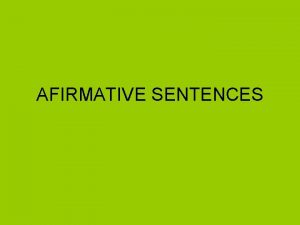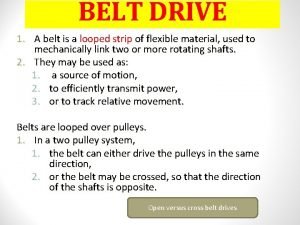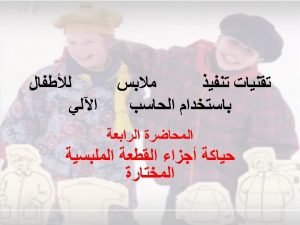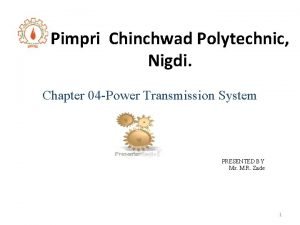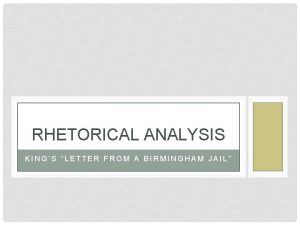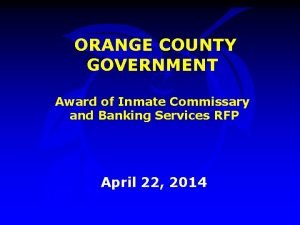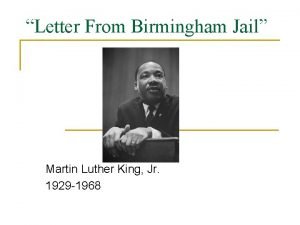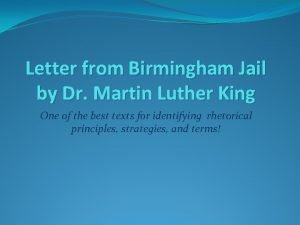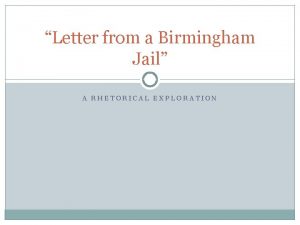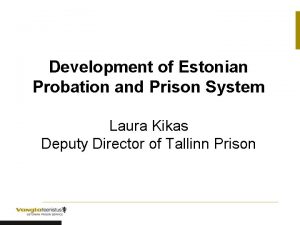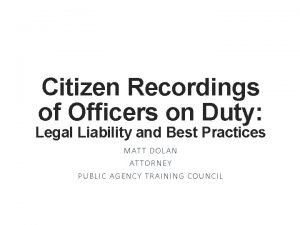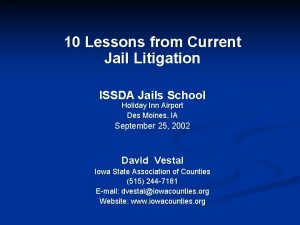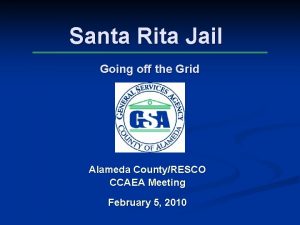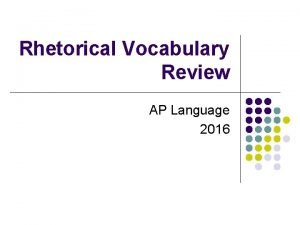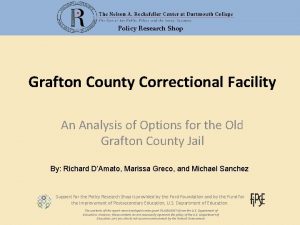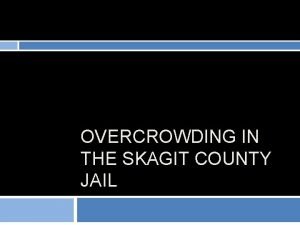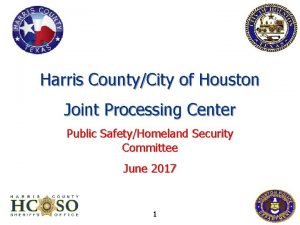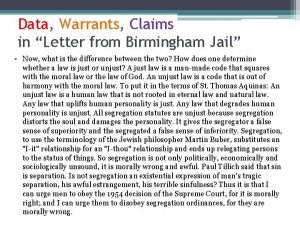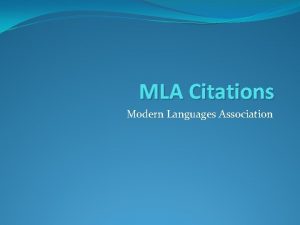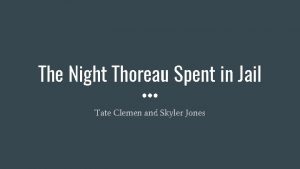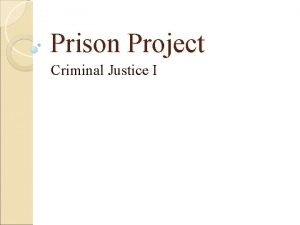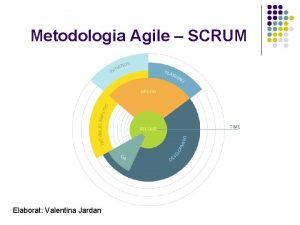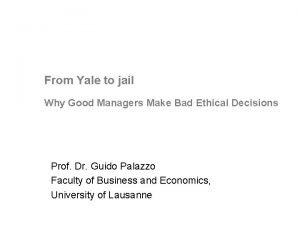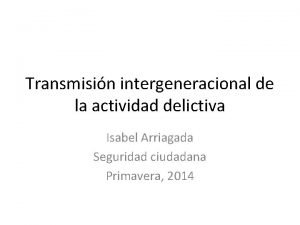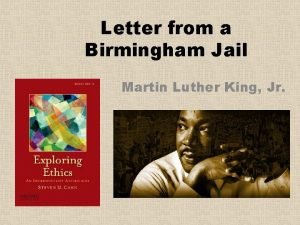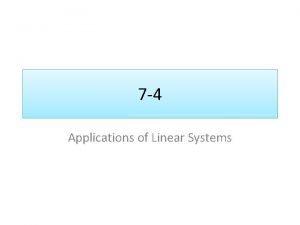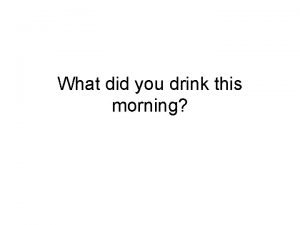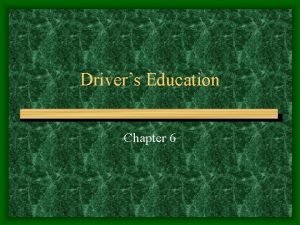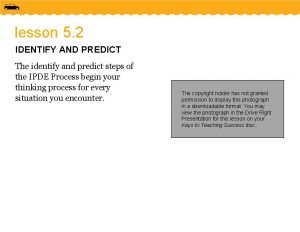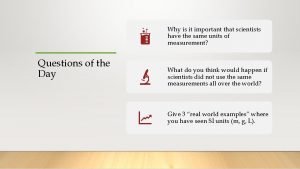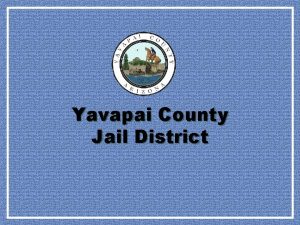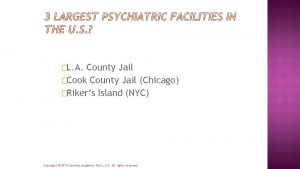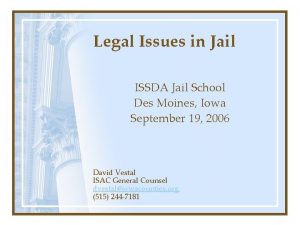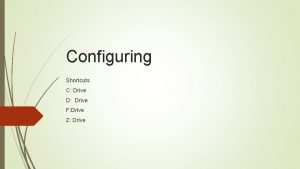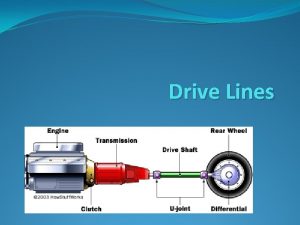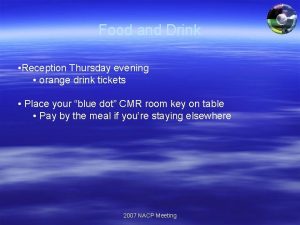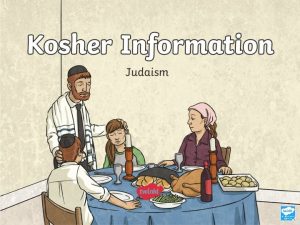You drink You drive You go to jail















































- Slides: 47

You drink. You drive. You go to jail. Where’s recursion? Daniel L. Everett Illinois State University dlevere@ilstu. edu http: //www. llc. ilstu. edu/dlevere/

What is recursion? • 1. “An operation that applies to its own output. ” • 2. “Having the property that in principle a machine could determine in finite time, for any arbitrary finite string over the right alphabet, whether the string is in the language or not. ” • I will assume we are interested in (1). • We see family resemblances to recursion all around us:



One statement of its importance: • HC&F (1573): “In fact, we propose in this hypothesis that FLN comprises only the core computational mechanisms of recursion as they appear in narrow syntax and the mappings to the interfaces. ”

Curious �“Learners are resistant to recursion” �(paraphrase of Roeper and Hollebrandse)

Recursion as a non-modular (or general) capacity 1. No one doubts that recursion plays a role in human cognition. Humans can think thoughts about people thinking certain thoughts, or about people believing that other people are thinking certain thoughts, etc. 2. But where is the source of recursion? Grammar? Or cognition more generally? There at least three theses one could explore: 2 a. Recursion originates in cognition and from there it may perhaps be manifested in grammar. 2 b. Recursion originates in grammar and it is manifested in nonlinguistic cognitive activities only parasitically on the linguistic phenomenon. 2 c. There are separate recursions for each cognitive module. I WON’T EXPLORE THIS OPTION IN THIS TALK.

Recursion: grammar or cognition more generally? • 3. It would be at least some evidence for 2 b if all grammars had recursion. • • 4. It would be evidence for 2 a if there were languages that lack recursion in their syntax but have it in discourse -- in the way speakers organize, present, and discuss information. • • 5. Various researchers have presented evidence from several languages that seem to lack recursion. If correct, these tell heavily against 2 b

Another way of putting the matter • "The question is not whether anything at all is specific to human beings and/or hard wired into the brain, but whethere exist rules that are specific to human language and not a result of our general conceptual/perceptual apparatus together with our experience of the world. " (Goldberg 2009: 117, Cog Ling)

Languages that might lack recursion based on extant descriptions • 1. Pirahã • 2. Hixkaryana • 3. Warlpiri • 4. Teiwa • 5. Dutch Sign Language • 6. No doubt others if re-examined from nonrecursion committed perspective.

Surprising to find languages without recursion? • Hilda Koopman – if there are languages that have structures for which the basic level of recursion must be set to 1, 2, 3, etc. (proliferation of numbers is problematic here), perhaps languages can set it to zero for all structures.

One way we might settle the matter • “We present a Bayesian framework for performing rational inference that enables us to quantitatively evaluate grammars with and without recursive rules and normatively determine which best describe the sentences in a corpus…” Perfors, Tenenbaum, & Gibson (paper presented at Recursion in Human Language, ISU, 2007. To appear in van der Hulst, 2009.

Pirahã (Hiaiitíihí): NP Structure – Possession • John's brother's house. • Xahaigí kaiíi xáagahá. Xaikáibaí xahaigí xaoxaagá. Xahaigi xaisigíai. • 'Brother's house. John has a brother. It is the same one. '

Pirahã (Hiaiitíihí): NP Structure - Modification • *Kabogáohoí biísai xogií hoíhio. • Kabogáohoí biísai. Xogií píaii. Hoí hiaagá • 'Two big red barrels. '

Pirahã (Hiaiitíihí): Restrictive Reference • Ti baósaápisí xoog -abagaí. Xigi -ábií xaoói. • Chico hi goó baósaápisí bagá -boí. • Baósaápisí xais -igí -ai. • 'I want a hammock. I am like a Brazilian. Chico sold a/the hammock (restriction of reference). It is the same one. '

Pirahã (Hiaiitíihí): Complement Clauses without embedding - Imperatives • Ti xibíib –i –hiab –iig –á. Kahaí kai-sai. • ‘I am not ordering you. (We are speaking of) (you) make an arrow. ’ • 2. Ti gí xibíibihiabiigá. Ti gí xoog-i-baaí. Gíxai kahaí kaí xígiaoaxáí-sai. Pixái xíga. • I am not ordering you. I really want an arrow. OK? You make an arrow. Now.

Pirahã (Hiaiitíihí): Complement Clauses without embedding - Quotatives • (i) Hi gái -sai. Tiobáhai kab -iig -á. • 'He says-sai there is no child here. ’ • (ii) Hi gá –xai –á –b –í -sai. • Tiobáhai kab -í-sai-áaga-há. • 'He says-sai there is no child here. ' • (iii) Hi gá –xai –á –b –í –sai. Tiobáhai kab -í-sai-áagí-sai. • 'He says-sai there is no child here. '

Pirahã (Hiaiitíihí): Adjunct Clauses: Temporals • (i) Kohoái-kab-áo-b-áo. Ti abagaí. gí xahoai-soog- • ' (When I) finish eating, I want to speak to you. ' • (ii) K-ab –áo –b -á. • 'It is finished. ' Or 'He/she/it finished. ’ • (iii) Ti soxoá xísi kap –áo -b-a. • 'I just/already shot the animal. '

Pirahã (Hiaiitíihí): Adjunct Clauses: Temporals (cont. ) • (i) Kaógiái xaaboó –pái –ta –h -aó. • Kaógiái bíí –oo –ab -á. • ' Kaógiái returned. Kaógiái was tired. ' (free: 'When he returned, Kaogiai was tired. ') • (ii) Kaógiái bííooabá. Kaógiái xaaboópaitahaó. • ‘Kaógiái was tired. Kaógiái returned. (free: ' Kaógiái was tired when he returned. ')

Wh-extraction: Simple clauses • Kohoibiíhiai kaoí xob –áo -b -á? • 'Who did Kohoibiíhiai see? ’ • Kaoí Kohoibiíhiai xobáobá? • (i) 'Who did Kohoibiíhiai see? ' • (ii) 'Who saw Kohoibiíhiai? ’ • Paóxaisi hi • 'What will Dan kill? ’ • Hi goó koabáipí? Paóxaisi koabáipí? • (i) 'What will Dan kill? ' • (ii) 'What will kill Dan? '

Wh-Extraction: Simple Clauses • Hi goó kai xo-báaxáí. -baaí -sai. Hi • 'What [thing/kind of] making [does he] know well? ' (literally 'He what associated making sees well? ') • Hi xobáaxáí. Hi goó kai baaí-sai. • 'He knows well. What does he intensely make? ’ • ∗Goó hi/Hi goó xobáaxáí. __ kai –sai. • 'What thing [does he] know well to make? ' (literally 'What associated thing he knows well to make/making? ') • *Who You came to town yesterday. ___ did Bill see?

Wh-extraction – potential embedding clauses • (1) "When did the boy say he fell? • (2) Hi goógíiso tiobáhai gáísai. Hi bigí kaobíi. • (Lit: When did the child talk/speak. He fell to the ground. ) • 'When did the child SAY he fell? ’ • (3) Tiobáhai hi goógíiso gáísai. Hi bigí kaobíi. • 'When did the child say he fell? ’

Wh-extraction – potential embedding clauses • (4) Tiobáhai gáísai. Hi goógíiso bigí kaobíi. • The child said/asked 'When did he fall? ' • (5) Tiobáhai goó gáísai. Hi goógíiso bigí kaobíi. • (lit: ‘The child said what/focus. He fell when? ’) • ‘When did he say he FELL __?

Clauses Conditionals • Pii-boi-baaí-hai. Ti kahápi-hiaba. • 'It is raining a lot. I will not go. ’ • Pii-boi-baaí-sai. Ti kahápi-hiaba. • ‘(We are talking about) it raining a lot (at a time also under discussion). I will not go. ’ • Pii-boi-baaí-sai. Ti kahápi-hiabí-sai. • ‘(We are talking about) it raining a lot (at a time also under discussion). I will not go (as I had already mentioned). ’

Pirahã (Hiaiitíihí): Additional Evidence – No disjunction • Kohoi kahápií. Xabagi kahápií. Xmh. Kosaagá. • 'Kohoi came. Xabagi came. Hmm. (I) don't know. ’ • Kagáíhiaii Kóhoi xabáiipi. Kagáíhiaii Xabagi xabáiipi. Xmh. Kosaagá. • 'The jaguar jumped on Kóhoi. The jaguar jumped on Xabagi. Hmm. I don’t know. ’

Pirahã (Hiaiitíihí): Additional Evidence – No coordination • Kóhoi kahápií. Xabagi pío kahápií. Or Xabagi píaii. • 'Kóhoi left. Xabagi also left. '

The trip to see a plane • Not recorded on tape, Informant: Tisahai (written by Steve Sheldon) • This story was told by Tisahai to Xitaibigai. Tisahai had been to Porto Velho, and had taken a trip to the airport to look at airplanes. While there she saw soldiers and lots of Brazilians. She and her child saw inside a jet and the steward give them candy.




Structure of Text • Lines 1 & 2: Setting/beginning/background Line 3: First event • • Line 4 Second event, subordinated to first • Lines 5 -8: Setting/resumption • Line 9: Background to 8 • Line 10: Setting/resumption • Lines 11 & 12 Third and Fourth Events • Lines 13 -15 Setting/resumption • Lines 16 & 17: Clarification, new information • Line 18: Setting/closure

Tests for some levels of recursion

Embedding/recursion and entailments? • 1. John said that the price is right. (But it isn’t. ) • 2. John hopes that the price is right. • 3. John believes that the price is right. • 4. John doubts that the price is right.

Multiple embeddings • John said that Peter said that the moon is green cheese. • John believed that Peter believed that the moon is green cheese. • John said that Peter said that Bill said that Mary said, etc.

False beliefs without recursion: One embedding’s worth: • 1. The price is right. Or so John said. • 2. The price is right. John believes this anyway. • 3. The price is right. Actually, John doubts that. • 4. The price is right. Or so John hopes. • The price is right. Who said that? John said that. • The price is right. John hopes that(? )/so. • The price is right. John denies that/so. • The price is right. John supposes that/so.

How far can you go? • 1. With recursive syntax + recursive reasoning. • 2. With recursive reasoning alone.

False beliefs without embedding: Multiple embeddings’ worth • The moon is green cheese. Or so John said. Maria reported that anyway. • The Eskimos have 100 words for snow. That's Mary's claim. John told me about it. Do you believe it? • You drink. You drive. You go to jail. Rich people don’t go to jail though. That is what some people say. (Some people say that if you drink and drive, then you go to jail, unless you are rich. ) • Once upon a time, X. X = entire discourse.

Limbo linguistics - How low can you go? • ? Kóxoí higáísai. Kohoi hi goó gáísai. Xaogií báaxáí. • (lit: Koxoi said (that). Kohoi he what said. Foreign woman is pretty. ) • ‘Koxoi said that. Kohoi said THAT. The foreign woman is pretty. ’ • ? ? Kóxoí higáísai. Kohoi hi goó gáísai. Xaogií goó gáísai. Báaxáí, tíi. • ‘Koxoi said that. Kohoi said THAT. Foreign woman said THAT. I am pretty. ’

Some have suggested parataxis is the general strategy for getting meaning out of clauses

Davidson & Hobbs • Davidson 1968 “On Saying That” - offers paratactic theory of Oratio obliqua • Theory not widely accepted this days. But illustrates that even for languages with recursive syntax, there might be reasons for preferring a non-recursive semantics in some places. • Jerry Hobbs (2008) ‘Deep lexical semantics’: the real problem is Discourse.

BUT! • We see limitations to expressive power without syntactic recursion. • Recursive syntax has a utilitarian cognitive function.

Recursion and relative expressive power. • Pirahã easily allows bi-clausal structures to express the semantic effect of what would be one level of syntactic embedding in other languages. • After the equivalent of level three embedding, the translations into Pirahã are nearly impossible.

Expressive power of languages • Can anything be translated from any language to any other language? • No. They may have different expressive powers. • The key is the fit between language and culture/society/situation. The introduction of recursion into a grammar without it would not be a difficult step cognitively or linguistically.

Recursion as a cognitive tool? • Societies of intimates and restricted universe of discourse vs. societies of strangers and wider ranges of discourse. • Recursion aids interpretation. But where is it in the brain? I am betting on (a). • (a) One general recursion tool beginning outside of grammar? • (b) One general recursion tool beginning with grammar? • (c) Different recursions for different modules

What is it, after all? • We are still puzzled, I think. But that’s OK. Lot’s of things can require lots of thinking. Like simple things we see.

Whoa, Dan’s plane is coming. We gotta talk baby talk witho recursion again!

 Understanding google drive
Understanding google drive Https://slidetodoc.com
Https://slidetodoc.com гугл диск
гугл диск Why you shouldnt drink and drive
Why you shouldnt drink and drive Meet me at the cinema he said
Meet me at the cinema he said Differentiate between belt drive and chain drive
Differentiate between belt drive and chain drive Https drive google com file d 1zphjwy1qqf1g
Https drive google com file d 1zphjwy1qqf1g Https drive google com drive u 0 recent
Https drive google com drive u 0 recent Difference between chain drive and belt drive
Difference between chain drive and belt drive Comait
Comait If you obey your thirst then you drink sprite
If you obey your thirst then you drink sprite Warren county ky jail commissary
Warren county ky jail commissary Cherry valance description
Cherry valance description Siskiyou county bookings
Siskiyou county bookings Rhetorical analysis of letter from birmingham jail
Rhetorical analysis of letter from birmingham jail Orange county jail commissary
Orange county jail commissary Letter from birmingham jail 3 main points
Letter from birmingham jail 3 main points Letter from birmingham jail soapstone
Letter from birmingham jail soapstone Anaphora in letter from birmingham jail
Anaphora in letter from birmingham jail Laura giraldo jail
Laura giraldo jail Get out of jail free card
Get out of jail free card Issda jail school
Issda jail school Alameda off the grid
Alameda off the grid Polysyndeton definition ap lang
Polysyndeton definition ap lang Grafton county jail
Grafton county jail Skagit county jail commissary
Skagit county jail commissary 49 san jacinto houston texas
49 san jacinto houston texas Birmingham city jail warrants
Birmingham city jail warrants Letter from birmingham jail mla citation
Letter from birmingham jail mla citation Grayson county ky jail commissary
Grayson county ky jail commissary Jail industries
Jail industries The night thoreau spent in jail characters
The night thoreau spent in jail characters Malcolm x
Malcolm x Jail vs school
Jail vs school Metodologia scrum
Metodologia scrum From yale to jail
From yale to jail Metodologia jail
Metodologia jail Socrates letter from birmingham jail
Socrates letter from birmingham jail Jail container
Jail container Do you fancy going for a drink
Do you fancy going for a drink Suppose you want to combine two types of fruit drink
Suppose you want to combine two types of fruit drink What cup can you never drink out of
What cup can you never drink out of What did you drink
What did you drink Baking bread endothermic or exothermic
Baking bread endothermic or exothermic To steer straight forward, look
To steer straight forward, look You drive we care
You drive we care In orderly visual search pattern
In orderly visual search pattern King henry doesn't usually drink chocolate milk
King henry doesn't usually drink chocolate milk




